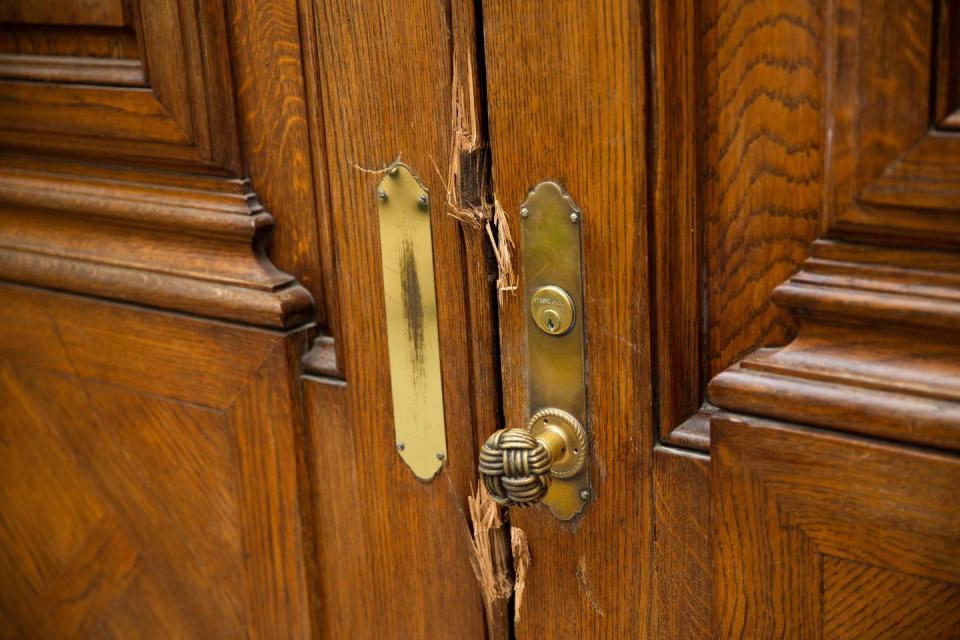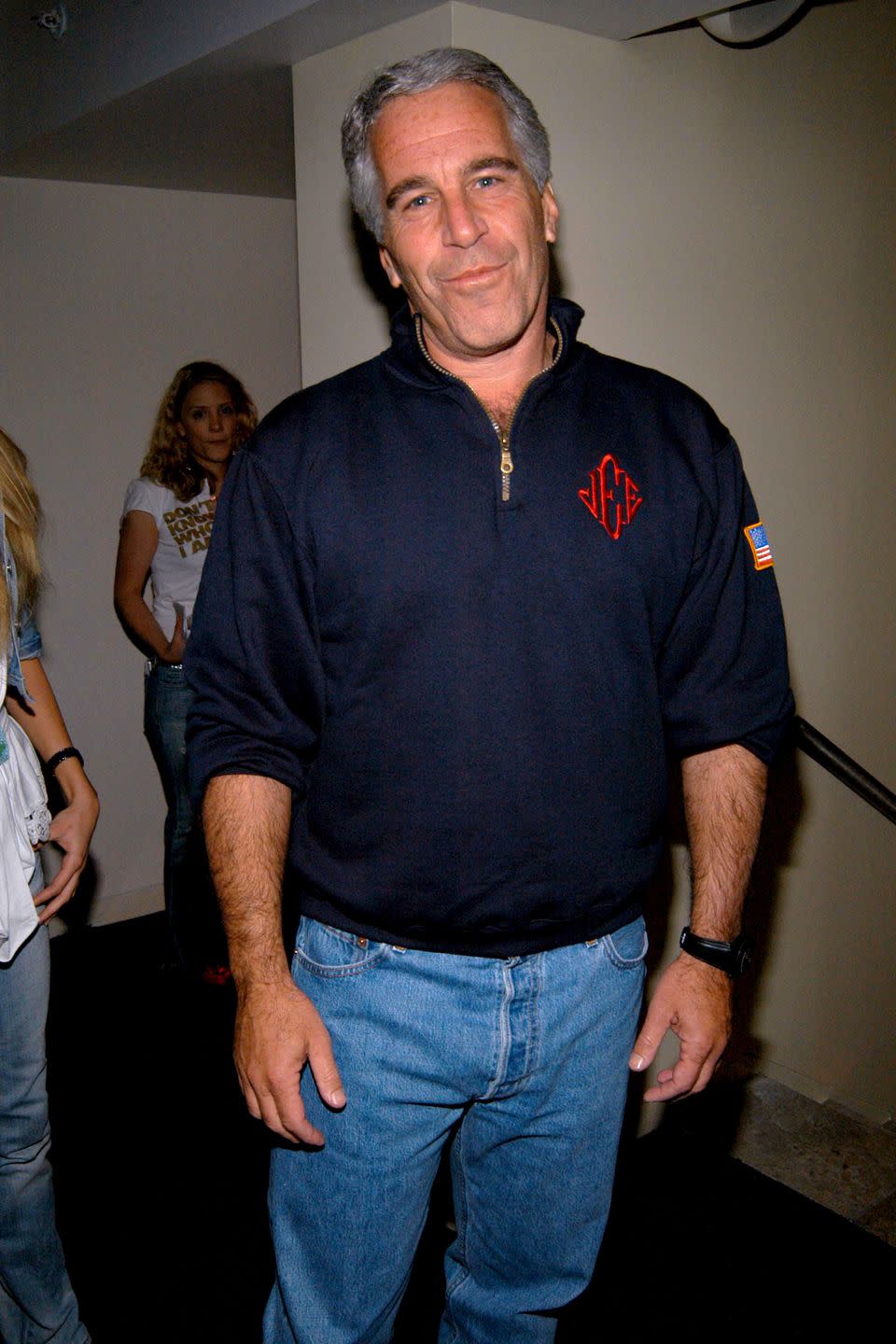Jeffrey Epstein Installed a Mural of a Prison Yard at His Townhouse

- Oops!Something went wrong.Please try again later.
Update May 27, 2020: On August 10, 2019, Jeffrey Epstein was found dead in his Manhattan jail cell. The cause of death was ruled a suicide. In light of a new Netflix documentary called Jeffrey Epstein Filthy Rich, which reexamines Epstein's life and alleged crimes, we're resurfacing this story about his Upper East Side mansion.
The story below was originally published on July 10, 2019.
The French neoclassical townhouse at 9 East 71st Street is on one of the most fashionable blocks on the Upper East Side. Bookended to the west by the Frick Collection on Fifth Avenue and the 1810 St. James’ Church just across Madison Avenue in the east, is not usually the kind of place that FBI agents use a crowbar to access.
But the home is having a moment of infamy, as the $77-million house of horrors where financier Jeffrey Epstein lived and allegedly sexually abused underage girls; lurid photos of girls were discovered in a safe during the FBI raid.
Today, the houses's fifteen-feet-high oak doors, shaded by Callery pear trees on the north side of the street, bear gouges from that crow bar. It is the only visual evidence of the raid that took place this past Saturday, at the same time that Epstein was being arrested at Teterboro, the private jet airport in New Jersey that serves New York City’s ruling class.

In addition to being an alleged crime scene, questions swirl about the circumstances under which Epstein came to own the house. Its previous owner was his mentor, Leslie H. Wexner, chairman of L Brands, which owns retailers including Victoria’s Secret.
For reasons that have never been explained, Wexner appears to have made a gift of the house to Epstein, transferring title for the cost of $0 around 1996. The New York Times reports the property was formally transferred in 2011 from a trust controlled by Wexner and Epstein to a Virgin Islands-based entity controlled by Epstein; Wexner, meanwhile, told the Times through a spokeswoman that he "severed ties" with Epstein a decade ago.
Number 9 had many incarnations along its path to infamy. Fifty feet wide and seven stories tall, the house was designed by Horace Trumbauer, a fashionable residential architect, for Herbert N. Straus, an heir to the Macy’s department store fortune, whose father had perished on the Titanic 18 years earlier.
(Trumbauer was highly sought-after by the stylish rich—it was onto a Trumbauer bathroom floor in Newport, R.I., that Sunny von Bulow collapsed in 1980, setting off the attempted murder trial of her recently-deceased husband, Claus.)
Construction on the Straus mansion began in 1930, but three years later, Straus was dead himself, felled by a heart attack at 51. He never moved into the 40-room mansion behind the handsome limestone façade. With the death of his client and the onset of the Depression, Trumbauer's masterpiece was boarded up at 90 percent complete, and sat unfinished until 1944.

That year, according to American Splendor: The Residential Architecture of Horace Trumbauer, by Michael C. Kathrens, Straus’s sons made a gift of it to the Roman Catholic Archbishopric of New York, which “used it as a 60-bed annex for St. Clare’s hospital for convalescing soldiers returning from the war.”
In 1962, it became the Birch Wathen School, which moved out in 1989 when Wexner purchased the property for $13.2 million, then a record for townhouse sales in Manhattan. (The property's value has fluctuated over the years.) It stood just across the street from the neo-Renaissance home of the fashionable Miller sisters (daughters of Robert W. Miller, the duty free mogul), which later became the New York residence of Marie-Chantal and her husband, Crown Prince Pavlos of Greece. (It turned out to be quite the ghoulish block: at the time, Bill Cosby lived across the street at number 18.)
Wexner renovated the 21,000 square-foot interior and filled it with expensive artworks by the likes of Picasso. One of its baronial drawing rooms even made the December 1995 cover of Architectural Digest magazine.
Epstein’s taste, however, was somewhat different. Guests describe chairs upholstered in leopard print, a twice life-sized sculpture of a naked African warrior, and a framed picture of a woman holding an opium pipe and caressing a lion skin. In addition to photographs of pals like Woody Allen, Bill Clinton, and Crown Prince Mohammed bin Salman of Saudi Arabia, the Times reported a “life-size female doll hanging from a chandelier.”
And R. Couri Hay, a publicist who visited Epstein at the house three months ago, tells Town & Country “he has a mural on the terrace, the whole length of the building, of a prison yard with barbed wire and guard towers. The inmates are out exercising, and he pointed to one and said, ‘That’s me. That’s to remind myself that I could go back there.”
In addition to “hundreds—and perhaps thousands—of sexually suggestive photographs of fully- or partially-nude females,” Assistant U.S. Attorney Alex Rossmiller revealed in a filing this week that the house also contained a massage table with sex toys and lubricant.
If the mural had been intended as a warning to himself, Epstein seems not to have absorbed its message.
You Might Also Like


